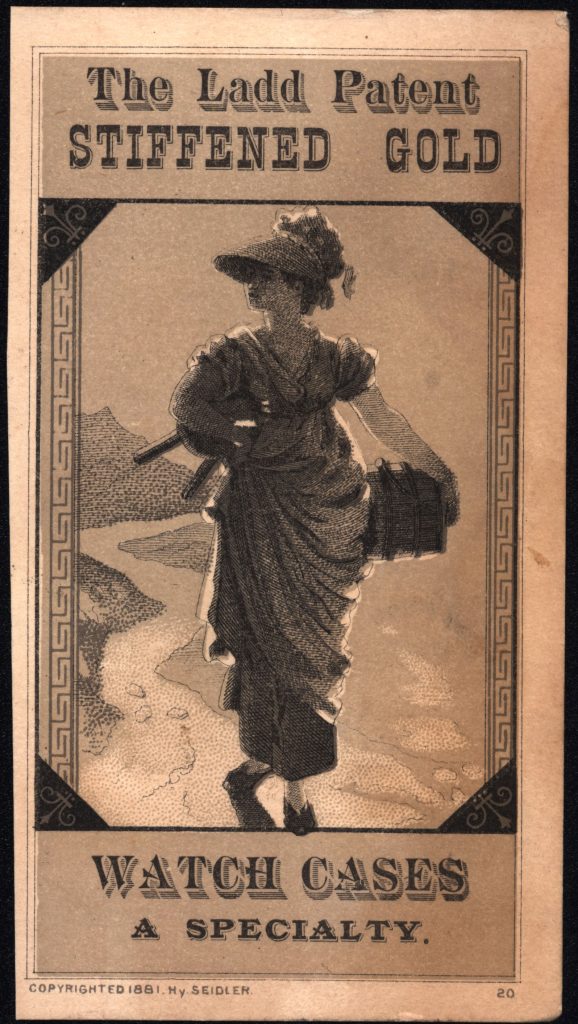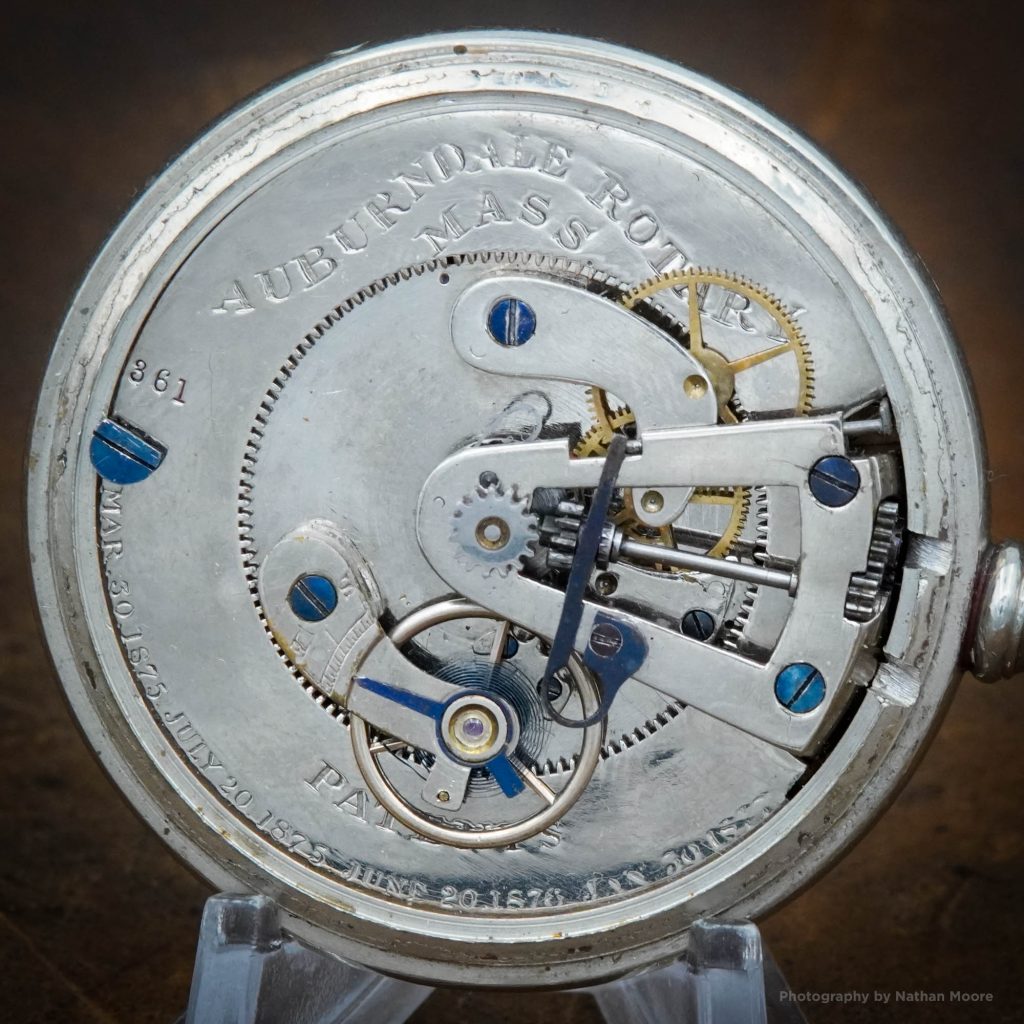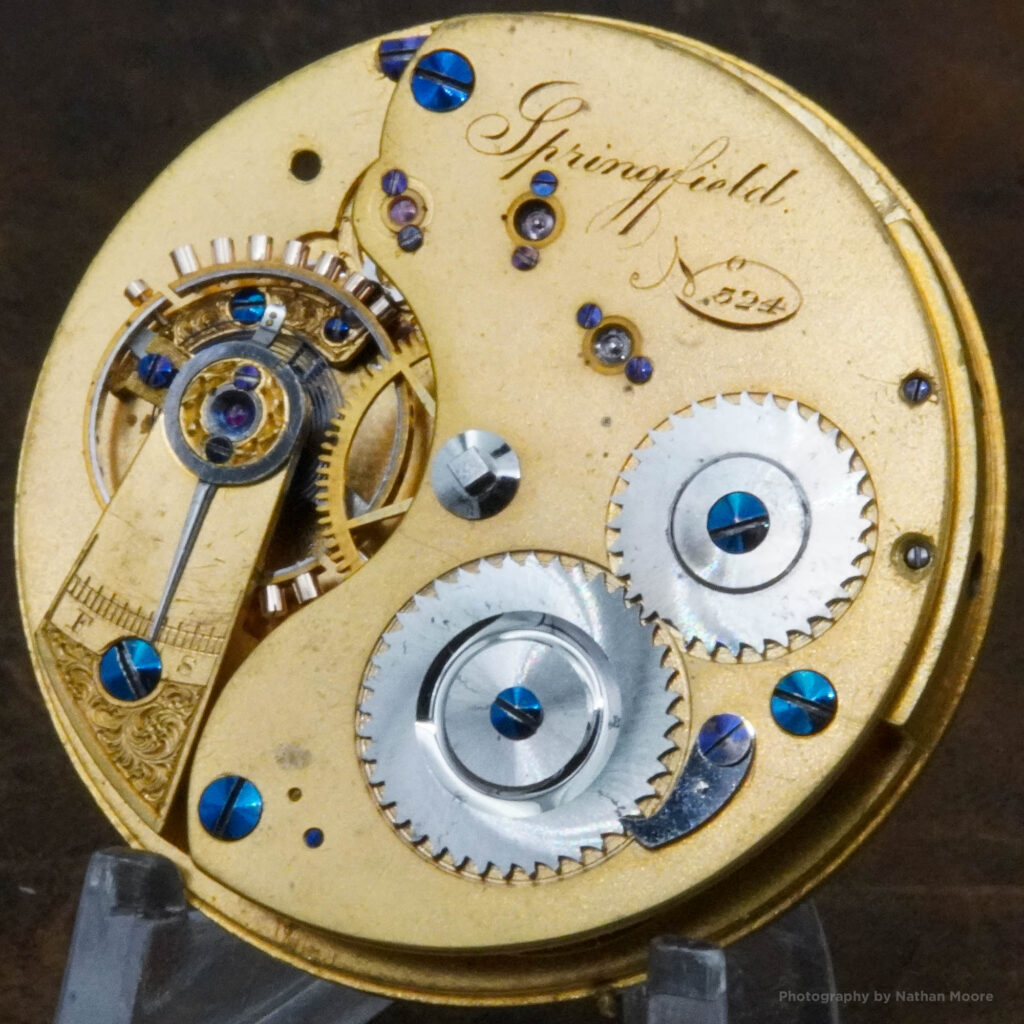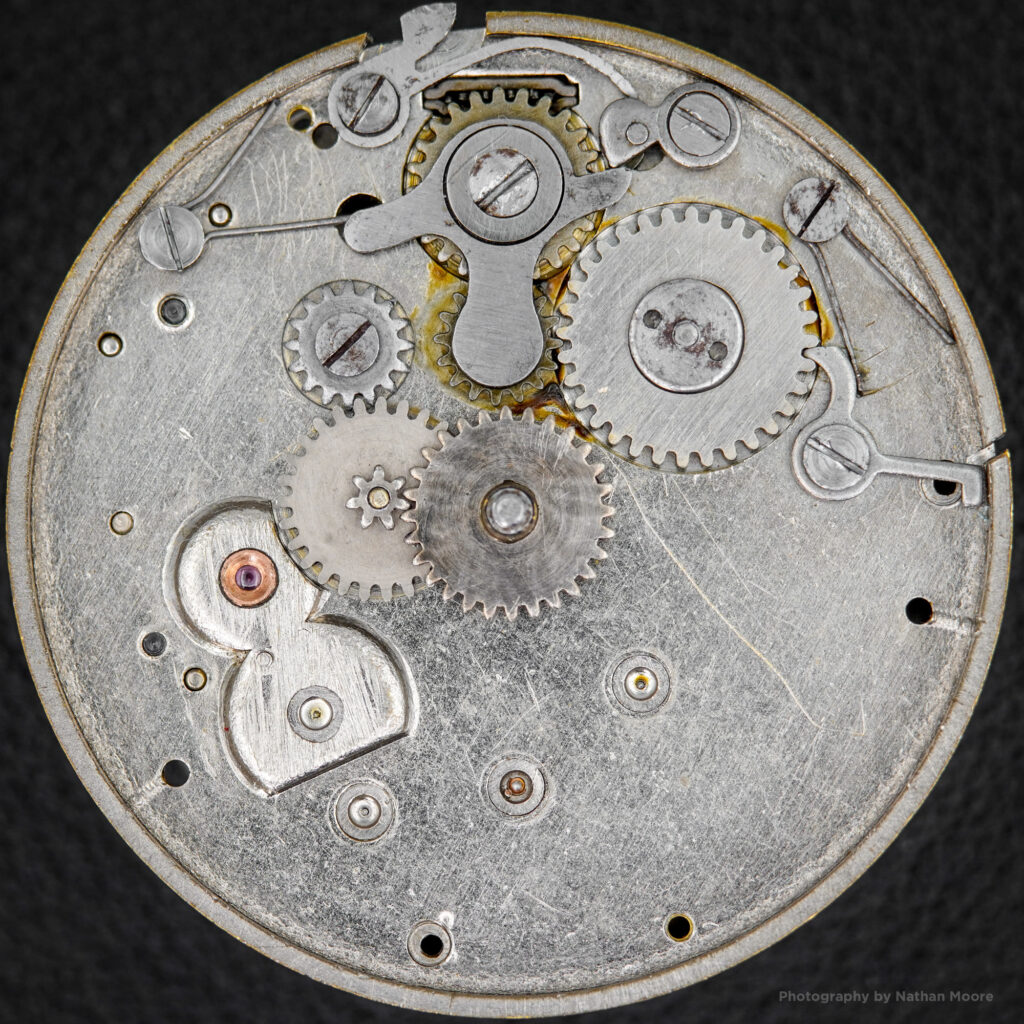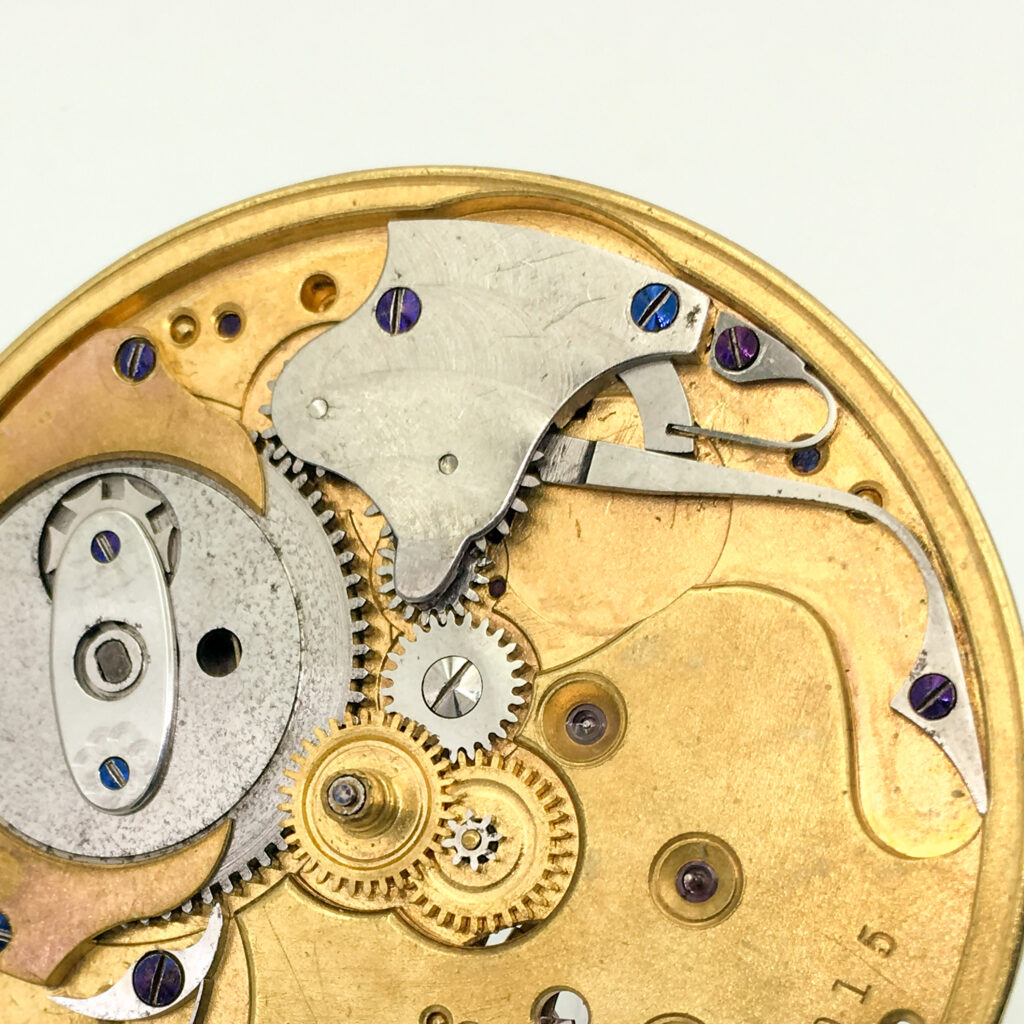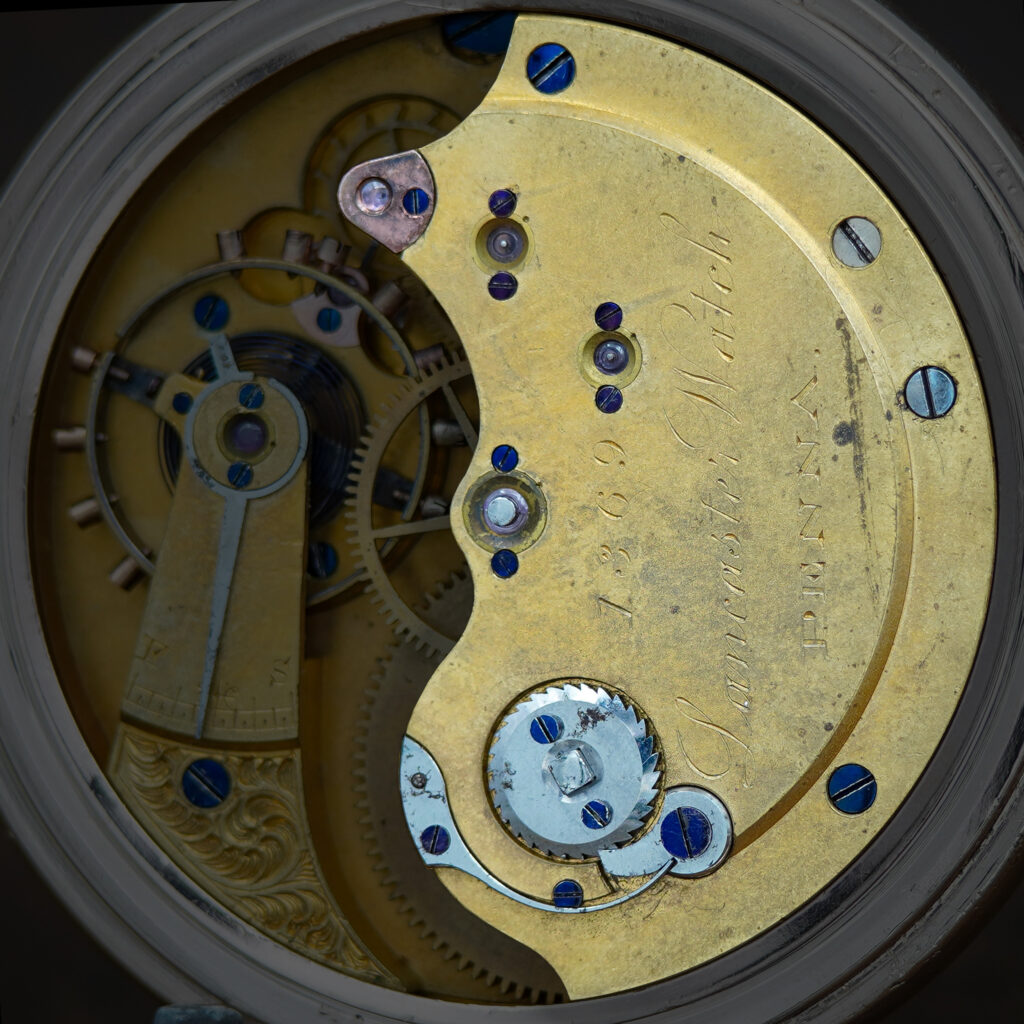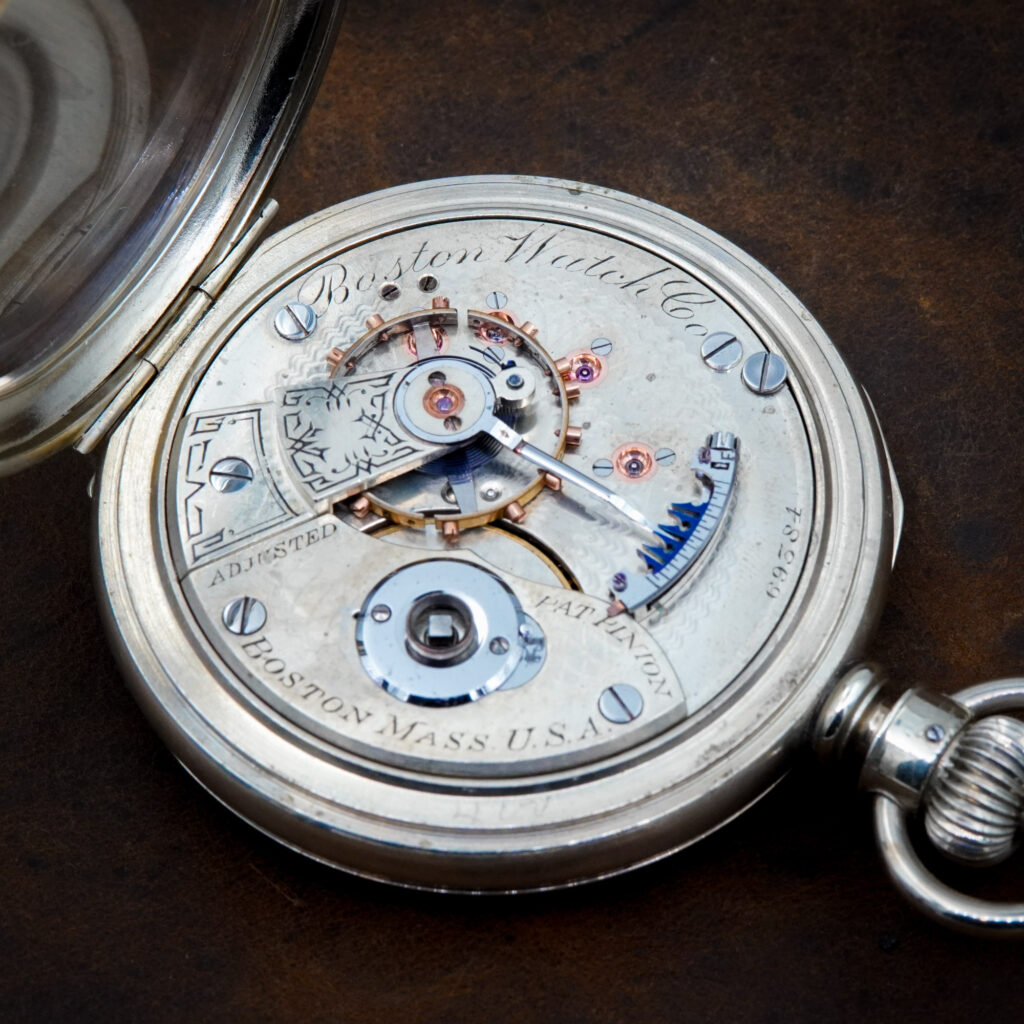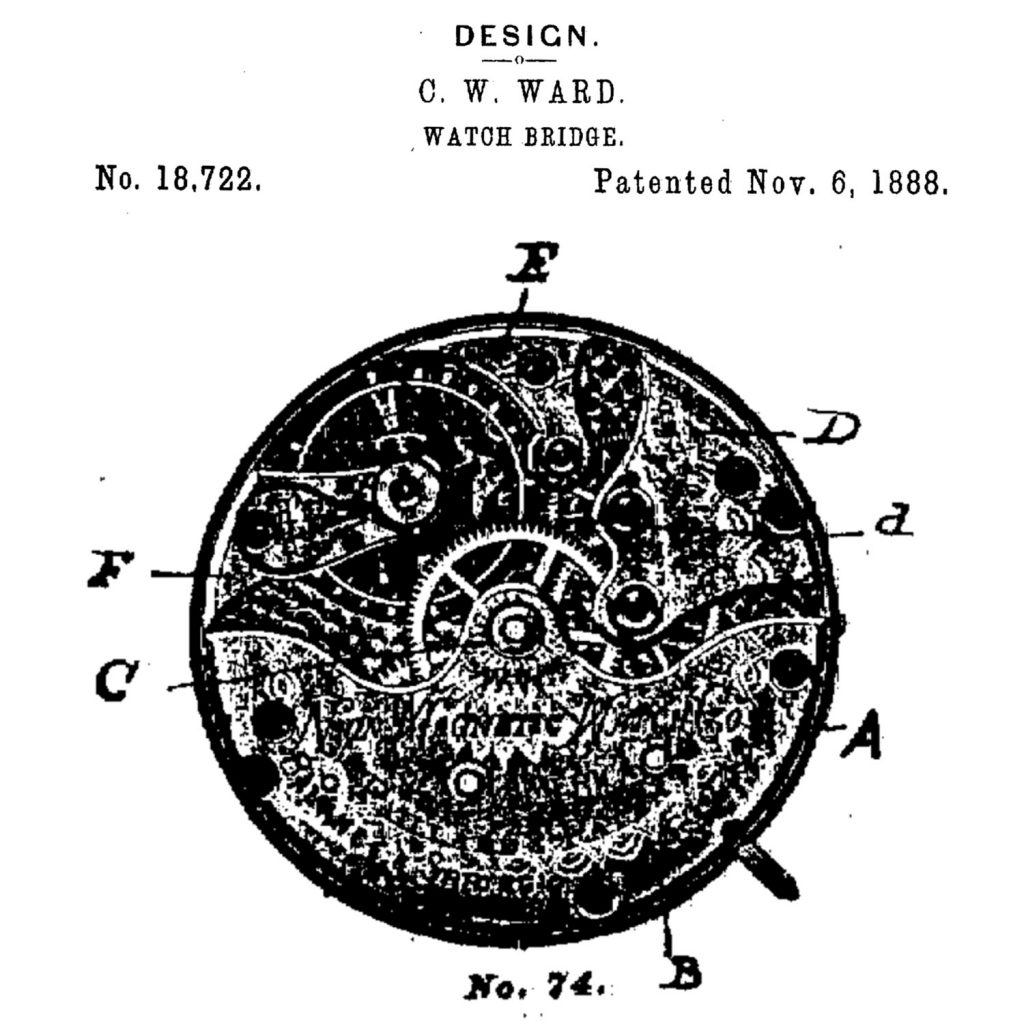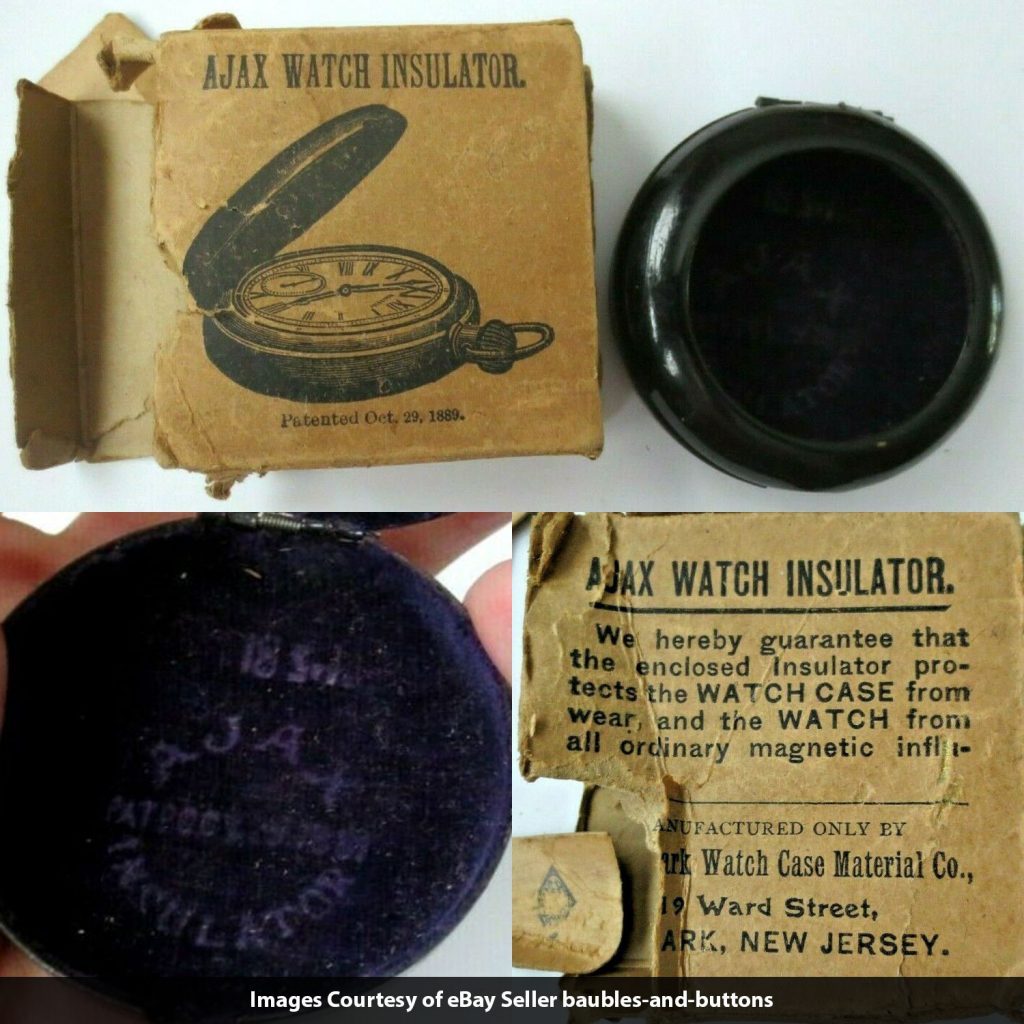Patent
Auburndale Rotary Watch by the Auburndale Watch Company #361 The Auburndale Watch Company operated for a short period of time in the late 1870s and early 1880s. The company's flagship.
New York Watch Company Springfield Movement #324, c.1869 A few months ago, I posted a brief study on Edwin H. Perry's patented stem-setting mechanism utilized in the construction of the.
Note: This original article has been revised to focus on the implementation of Rice & Gerry's patent in the early "Springfield" movements manufactured by the New York Watch Company following.
In addition to his elegant watch plate design, Edwin H. Perry received a patent for his stem-winding and setting mechanism on May 30, 1871. This mechanism was implemented when the.
Boston Watch Co. Private Label Movement #695384 with Goold's Patent Regulator Closeup of Frank C. Goold's Patent Regulator c.1877 "Boston Watch Co." private label manufactured by the Hampden Watch Company..
Pictured: “Watch Bridge” U.S. Patent #D18722 In a move that was rather uncommon for watch manufacturers at the time, the Non-Magnetic Watch Company of America applied for a design patent.

